Papers by Michela Mariani
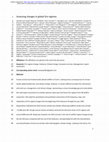
Human activity has fundamentally altered wildfire on Earth, creating serious consequences for hum... more Human activity has fundamentally altered wildfire on Earth, creating serious consequences for human health, global biodiversity, and climate change. However, it remains difficult to predict fire interactions with land use, management, and climate change, representing a serious knowledge gap and vulnerability. We used expert assessment to combine opinions about past and future fire regimes from 98 wildfire researchers. We asked for quantitative and qualitative assessments of the frequency, type, and implications of fire regime change from the beginning of the Holocene through the year 2300. Respondents indicated that direct human activity was already influencing wildfires locally since at least~12,000 years BP, though natural climate variability remained the dominant driver of fire regime until around 5000 years BP. Responses showed a ten-fold increase in the rate of wildfire regime change during the last 250 years compared with the rest of the Holocene, corresponding first with the ...
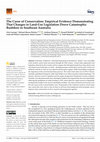
Fire
Protecting “wilderness” and removing human involvement in “nature” was a core pillar of the moder... more Protecting “wilderness” and removing human involvement in “nature” was a core pillar of the modern conservation movement through the 20th century. Conservation approaches and legislation informed by this narrative fail to recognise that Aboriginal people have long valued, used, and shaped most landscapes on Earth. Aboriginal people curated open and fire-safe Country for millennia with fire in what are now forested and fire-prone regions. Settler land holders recognised the importance of this and mimicked these practices. The Land Conservation Act of 1970 in Victoria, Australia, prohibited burning by settler land holders in an effort to protect natural landscapes. We present a 120-year record of vegetation and fire regime change from Gunaikurnai Country, southeast Australia. Our data demonstrate that catastrophic bushfires first impacted the local area immediately following the prohibition of settler burning in 1970, which allowed a rapid increase in flammable eucalypts that resulted...

Vegetation History and Archaeobotany
Understanding the significance of pollen diversity is key to reconstructing plant diversity over ... more Understanding the significance of pollen diversity is key to reconstructing plant diversity over long timescales. Here we present quantitative pollen-plant diversity comparisons for a mountainous area of the Western Mediterranean region. Samples were collected between 430-1865 m elevation and pollen-plant diversity assessed through richness and turnover (beta-diversity) metrics. We found statistically significant relationships between pollen diversity metrics and the diversity of pollenequivalent plant taxa in the surrounding vegetation. The strongest richness relationships emerged from the exclusion of trees and with rarefaction applied to both plant and pollen datasets. Three different metrics for turnover produced similar results, but emphasise different components of beta diversity (replacement vs richness differences). These results pave the way for reconstructing biodiversity trends from pollen sequences, with a number of caveats. Fossil pollen is a potentially a rich source of information on past biodiversity in the Mediterranean region.
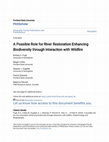
Global Ecology and Biogeography
Background: Historically, wildfire regimes produced important landscape-scale disturbances in man... more Background: Historically, wildfire regimes produced important landscape-scale disturbances in many regions globally. The "pyrodiversity begets biodiversity" hypothesis suggests that wildfires that generate temporally and spatially heterogeneous mosaics of wildfire severity and post-burn recovery enhance biodiversity at landscape scales. However, river management has often led to channel incision that disconnects rivers from their floodplains, desiccating floodplain habitats and depleting groundwater. In conjunction with predicted increases in frequency, intensity and extent of wildfires under climate change, this increases the likelihood of deep, uniform burns that reduce biodiversity. Predicted synergy of river restoration and biodiversity increase: Recent focus on floodplain re-wetting and restoration of successional floodplain habitat mosaics, developed for river management and flood prevention, could reduce wildfire intensity in restored floodplains and make the burns less uniform, increasing climate-change resilience; an important synergy. According to theory, this would also enhance biodiversity. However, this possibility is yet to be tested empirically. We suggest potential research avenues. Illustration and future directions: We illustrate the interaction between wildfire and river restoration using a restoration project in Oregon, USA. A project to reconnect the South Fork McKenzie River and its floodplain suffered a major burn ("Holiday Farm" wildfire, 2020), offering a rare opportunity to study the interaction between this type of river restoration and wildfire; specifically, the predicted increases in pyrodiversity and biodiversity. Given the importance of river and wetland ecosystems for biodiversity globally, a research priority should be to increase our understanding of potential mechanisms for a "triple win" of flood reduction, wildfire alleviation and biodiversity promotion.
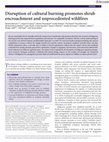
Frontiers in Ecology and the Environment, 2022
Recent catastrophic fires in Australia and North America have raised broad‐scale questions about ... more Recent catastrophic fires in Australia and North America have raised broad‐scale questions about how the cessation of Indigenous burning practices has impacted fuel accumulation and structure. For sustainable coexistence with fire, a better understanding of the ancient nexus between humans and flammable landscapes is needed. We used novel palaeoecological modeling and charcoal compilations to reassess evidence for changes in land cover and fire activity, focusing on southeast Australia before and after British colonization. Here, we provide what we believe is the first quantitative evidence that the region’s forests and woodlands contained fewer shrubs and more grass before colonization. Changes in vegetation, fuel structures, and connectivity followed different trajectories in different vegetation types. The pattern is best explained by the disruption of Indigenous vegetation management caused by European settlement. Combined with climate‐change impacts on fire weather and drought,...
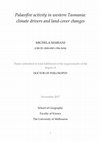
Southern Annular Mode (SAM) is the primary mode of atmospheric variability in the Southern Hemisp... more Southern Annular Mode (SAM) is the primary mode of atmospheric variability in the Southern Hemisphere. While it is well established that the current anthropogenic-driven trend in SAM is responsible for decreased rainfall in southern Australia, its role in driving fire regimes in this region has not been explored. We examined the connection between fire activity and SAM in southwest Tasmania, which lies in the latitudinal band of strongest correlation between SAM and rainfall in the Southern Hemisphere. We reveal that fire activity during a fire season is significantly correlated with the phase of SAM in the preceding year using superposed epoch analysis. We then synthesized new 14 charcoal records from southwest Tasmania spanning the last 1000 years, revealing a tight coupling between fire activity and SAM at centennial timescales, observing a multi-century increase in fire activity over the last 500 years and a spike in fire activity in the 21st century in response to natural and a...
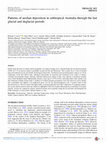
Quaternary Research, 2021
Debate about the nature of climate and the magnitude of ecological change across Australia during... more Debate about the nature of climate and the magnitude of ecological change across Australia during the last glacial maximum (LGM; 26.5–19 ka) persists despite considerable research into the late Pleistocene. This is partly due to a lack of detailed paleoenvironmental records and reliable chronological frameworks. Geochemical and geochronological analyses of a 60 ka sedimentary record from Brown Lake, subtropical Queensland, are presented and considered in the context of climate-controlled environmental change. Optically stimulated luminescence dating of dune crests adjacent to prominent wetlands across North Stradbroke Island (Minjerribah) returned a mean age of 119.9 ± 10.6 ka; indicating relative dune stability soon after formation in Marine Isotope Stage 5. Synthesis of wetland sediment geochemistry across the island was used to identify dust accumulation and applied as an aridification proxy over the last glacial-interglacial cycle. A positive trend of dust deposition from ca. 50...
Geophysical Research Letters, 2021
• We found three distinctive but homogeonous domains of influence of climate teleconnections patt... more • We found three distinctive but homogeonous domains of influence of climate teleconnections patterns. • The SCAND pattern exerts a zonal influence over the western Mediterranean basin. NAO controls the IP and WeMOi the Mediterranean coast. • Positive moisture winter-spring anomalies coupled to short-term dry and warm conditions boost most of the wildfire activity.
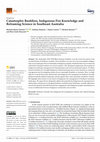
Fire, 2021
The catastrophic 2019/2020 Black Summer bushfires were the worst fire season in the recorded hist... more The catastrophic 2019/2020 Black Summer bushfires were the worst fire season in the recorded history of Southeast Australia. These bushfires were one of several recent global conflagrations across landscapes that are homelands of Indigenous peoples, homelands that were invaded and colonised by European nations over recent centuries. The subsequent suppression and cessation of Indigenous landscape management has had profound social and environmental impacts. The Black Summer bushfires have brought Indigenous cultural burning practices to the forefront as a potential management tool for mitigating climate-driven catastrophic bushfires in Australia. Here, we highlight new research that clearly demonstrates that Indigenous fire management in Southeast Australia produced radically different landscapes and fire regimes than what is presently considered “natural”. We highlight some barriers to the return of Indigenous fire management to Southeast Australian landscapes. We argue that to ade...
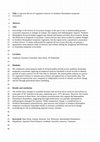
Global Ecology and Biogeography, 2020
AimKnowledge of the drivers of ecosystem changes in the past is key to understanding present ecos... more AimKnowledge of the drivers of ecosystem changes in the past is key to understanding present ecosystem responses to changes in climate, fire regimes and anthropogenic impacts. Northern Hemisphere‐focussed studies suggest that climate and human activities drove turnover during the Holocene in temperate ecosystems. Various drivers have been invoked to explain changes in Southern Hemisphere temperate vegetation, but the region lacks a quantitative assessment of these drivers. To better understand the regional drivers of past diversity, we present a quantitative meta‐analysis study of turnover and richness during the lateglacial and Holocene in Australian temperate ecosystems.LocationSouth‐east Australia (Tasmania, Bass Strait, SE mainland).MethodsWe conducted a meta‐analysis study of 24 fossil pollen records across south‐east Australian temperate ecosystems, applying an empirical turnover threshold to fossil records to identify periods of major turnover for the first time in Australia....
Science of The Total Environment, 2021
Burned area is associated with adverse weather patterns in southern California. • Climatic teleco... more Burned area is associated with adverse weather patterns in southern California. • Climatic teleconnections play a key role in modulating fire-conducive conditions. • Fire-promoting events are mediated by coupled effects of climate teleconnections.
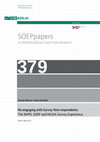
Journal of Biogeography, 2020
AimLong‐term ecological data provide a stepped frame of island ecosystem transformation after suc... more AimLong‐term ecological data provide a stepped frame of island ecosystem transformation after successive waves of human colonization, essential to determine conservation and management baselines. However, the timing and ecological impact of initial human settlement on many islands is still poorly known. Here, we report analyses from a 4800‐year sedimentary sequence from Gran Canaria (Canary Islands), with the goal of disentangling forest responses to natural fire from early human pressure on the island.LocationLa Calderilla, a volcanic maar caldera at 1,770 m a.s.l. on Gran Canaria.TaxonPlants and fungi.MethodsA core from the caldera infill was analysed for sediment properties, pollen, micro‐ and macrocharcoal, with radiocarbon and biochronology dating. Fossil data were statistically zoned and interpreted with the help of cross‐correlation and ordination analyses. Surface samples and a pollen–vegetation training set were used as modern analogues for vegetation reconstruction.Results...

Landscape Ecology, 2020
Context: Forest systems are dynamic and can alternate between alternative stable states in respon... more Context: Forest systems are dynamic and can alternate between alternative stable states in response to climate, disturbance and internal abiotic and biotic conditions. Switching between states depends on the crossing of critical thresholds and the establishment of feedbacks that drive (and maintain) changes in ecosystem functioning. The nature of these thresholds and the workings of these feedbacks have been well-researched, however, the factors that instigate movement toward and across a threshold remain poorly understood. Objectives: In this paper, we explore the role of species composition in initiating ecosystem state change in a temperate landscape mosaic of fire-prone and fire-sensitive vegetation systems. Methods: We construct two 12-kyr palaeocecological records from two proximal (230 m apart) sites in Tasmania, Australia, and apply the Alternative Stable States model as a framework to investigate ecosystem feedbacks and resilience threshold dynamics. Results: Our results indicate that, in this system, invasion by pyrogenic Eucalyptus species is a key factor in breaking down negative (stabilising) feedbacks that maintain pyrophobic sub-alpine rainforest. Conclusions: We conclude that the emergence of an alternative stable pyrogenic state in these relic rainforest systems depends on the extent of pyrophytic species within the system. These findings are critical for understanding resilience in forest ecosystems under future climate and land management changes and are relevant to fire-adapted cool-temperate ecosystems globally.
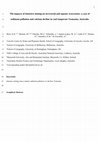
Environmental Pollution, 2020
Mining causes extensive damage to aquatic ecosystems via acidification, heavy metal pollution, se... more Mining causes extensive damage to aquatic ecosystems via acidification, heavy metal pollution, sediment loading, and Ca decline. Yet little is known about the effects of mining on freshwater systems in the Southern Hemisphere. A case in point is the region of western Tasmania, Australia, an area extensively mined in the 19 th century, resulting in severe environmental contamination. In order to assess the impacts of mining on aquatic ecosystems in this region, we present a multiproxy investigation of the lacustrine sediments from Owen Tarn, Tasmania. This study includes a combination of radiometric dating (14 C and 210 Pb), sediment geochemistry (XRF and ICP-MS), pollen, charcoal and diatoms. Generalised additive mixed models were used to test if changes in the aquatic ecosystem can be explained by other covariates. Results from this record found four key impact phases: (1) Pre-mining, (2) Early mining, (3) Intense mining, and (4) Post-mining. Before mining, low heavy metal concentrations, slow sedimentation, low fire activity, 3 and high biomass indicate pre-impact conditions. The aquatic environment at this time was oligotrophic and dystrophic with sufficient light availability, typical of western Tasmanian lakes during the Holocene. Prosperous mining resulted in increased burning, a decrease in landscape biomass and an increase in sedimentation resulting in decreased light availability of the aquatic environment. Extensive mining at Mount Lyell in the 1930s resulted in peak heavy metal pollutants (Pb, Cu and Co) and a further increase in inorganic inputs resulted in a disturbed low light lake environment (dominated by Hantzschia amphioxys and Pinnularia divergentissima). Following the closure of the Mount Lyell Co. in 1994 CE, Ca declined to below pre-mining levels resulting in a new diatom assemblage and deformed diatom valves. Therefore, the Owen Tarn record demonstrates severe sediment pollution and continued impacts of mining long after mining has stopped at Mt. Lyell Mining Co. Capsule of main findings The Owen Tarn record revealed four impact phases: Pre-mining, Early mining, Intense mining, and Post mining. Mining caused severe sediment pollution and Ca decline in the aquatic environment.
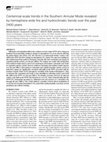
Geology, 2018
Millennial-scale latitudinal shifts in the southern westerly winds (SWW) drive changes in Souther... more Millennial-scale latitudinal shifts in the southern westerly winds (SWW) drive changes in Southern Ocean upwelling, leading to changes in atmospheric CO 2 levels, thereby affecting the global climate and carbon cycle. Our aim here is to understand whether century-scale shifts in the SWW also drive changes in atmospheric CO 2 content. We report new multiproxy lake sediment data from southwest Tasmania, Australia, that show centennial-scale changes in vegetation and fire activity over the past 2400 yr. We compare our results with existing data from southern South America and reveal synchronous and in-phase centennial-scale trends in vegetation and fire activity between southwest Tasmania and southern South America over the past 2400 yr. Interannual to centennial-scale rainfall anomalies and fire activity in both these regions are significantly correlated with shifts in the SWW associated with the Southern Annular Mode (SAM; atmospheric variability of the Southern Hemisphere). Thus, we interpret the centennial-scale trends we have identified as reflecting century-scale SAMlike shifts in the SWW over the past 2400 yr. We identify covariance between our inferred century-scale shifts in the SWW and Antarctic ice core CO 2 values, demonstrating that the SWW-CO 2 relationship operating at a millennial scale also operates at a centennial scale through the past 2400 yr. Our results indicate a possible westerly-driven modulation of recent increases in global atmospheric CO 2 content that could potentially exacerbate current greenhouse gas-related warming.
Journal of Quaternary Science, 2019
Tasmania's montane temperate rainforests contain some of Australia's most ancient and endemic flo... more Tasmania's montane temperate rainforests contain some of Australia's most ancient and endemic flora. Recent landscape-scale fires have impacted a significant portion of these rainforest ecosystems. The complex and rugged topography of Tasmania results in a highly variable influence of fire across the landscape, rendering predictions of ecosystem response to fire difficult. We assess the role of topographic variation in buffering the influence of fire in these endemic rainforest communities. We developed a new 14,000 year (14 ka) palaeoecological dataset from Lake Perry, southern Tasmania and compared it to neighbouring Lake Osborne (<250 m distant; Fletcher et al.,
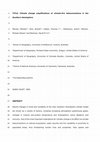
Geophysical Research Letters, 2018
Recent changes in trend and variability of the main Southern Hemisphere climate modes are driven ... more Recent changes in trend and variability of the main Southern Hemisphere climate modes are driven by a variety of factors, including increasing atmospheric greenhouse gases, changes in tropical sea surface temperature, and stratospheric ozone depletion and recovery. One of the most important implications for climatic change is its effect via climate teleconnections on natural ecosystems, water security, and fire variability in proximity to populated areas, thus threatening human lives and properties. Only sparse and fragmentary knowledge of relationships between teleconnections, lightning strikes, and fire is available during the observed record within the Southern Hemisphere. This constitutes a major knowledge gap for undertaking suitable management and conservation plans. Our analysis of documentary fire records from Mediterranean and temperate regions across the Southern Hemisphere reveals a critical increased strength of climate‐fire teleconnections during the onset of the 21st c...
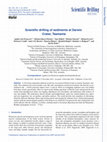
Scientific Drilling, 2019
A 70 m long continental sediment record was recovered at Darwin Crater in western Tasmania, Austr... more A 70 m long continental sediment record was recovered at Darwin Crater in western Tasmania, Australia. The sediment succession includes a pre-lake silty sand deposit overlain by lacustrine silts that have accumulated in the ∼ 816 ka meteorite impact crater. A total of 160 m of overlapping sediment cores were drilled from three closely spaced holes. Here we report on the drilling operations at Darwin Crater and present the first results from petrophysical whole core logging, lithological core description, and multi-proxy pilot analysis of core end samples. The multi-proxy dataset includes spectrophotometry, grain size, natural gamma rays, paleoand rock magnetism, loss on ignition, and pollen analyses. The results provide clear signatures of alternating, distinctly different lithologies likely representing glacial and interglacial sediment facies. Initial paleomagnetic analysis indicate normal magnetic polarity in the deepest core at Hole B. If acquired at the time of deposition, this result indicates that the sediment 1 m below commencement of lacustrine deposition postdate the Matuyama-Brunhes geomagnetic reversal ∼ 773 ka. tween the atmosphere, oceans, cryosphere and biosphere, and the long-term context from which to interpret current and future trends. This is particularly important in the mid-to high latitudes of the Southern Hemisphere, where Antarctic climate and circumpolar atmosphere-ocean dynamics exert a dominant influence not only on southern terrestrial climates but also on the global carbon cycle (







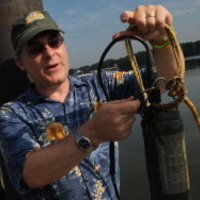



Uploads
Papers by Michela Mariani